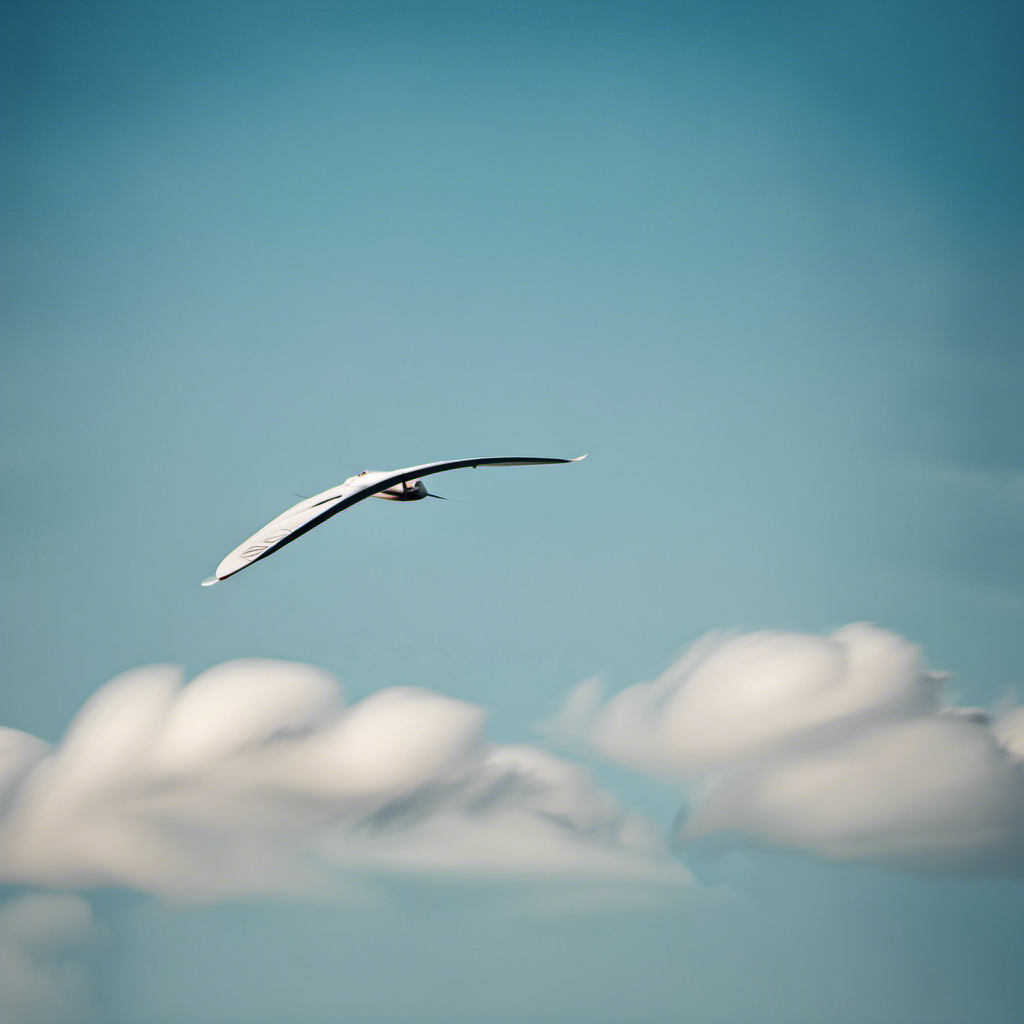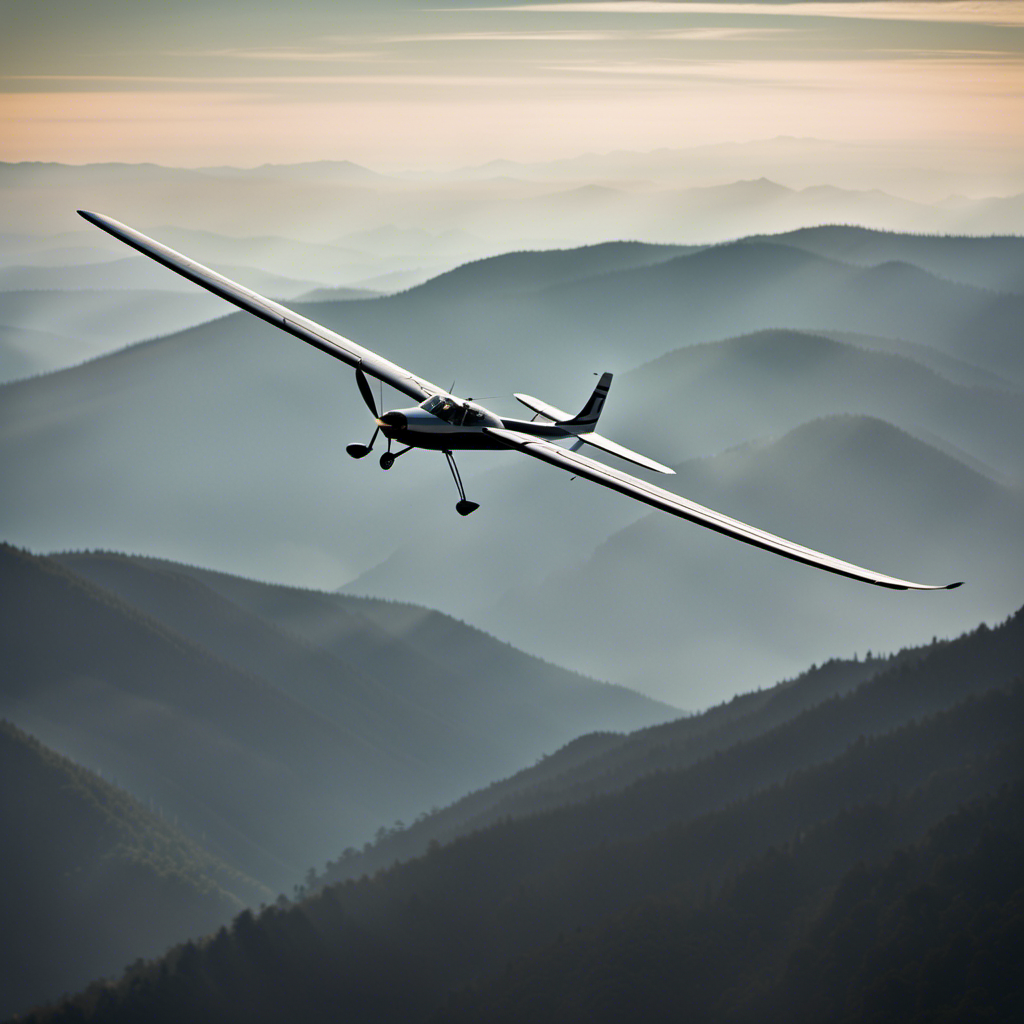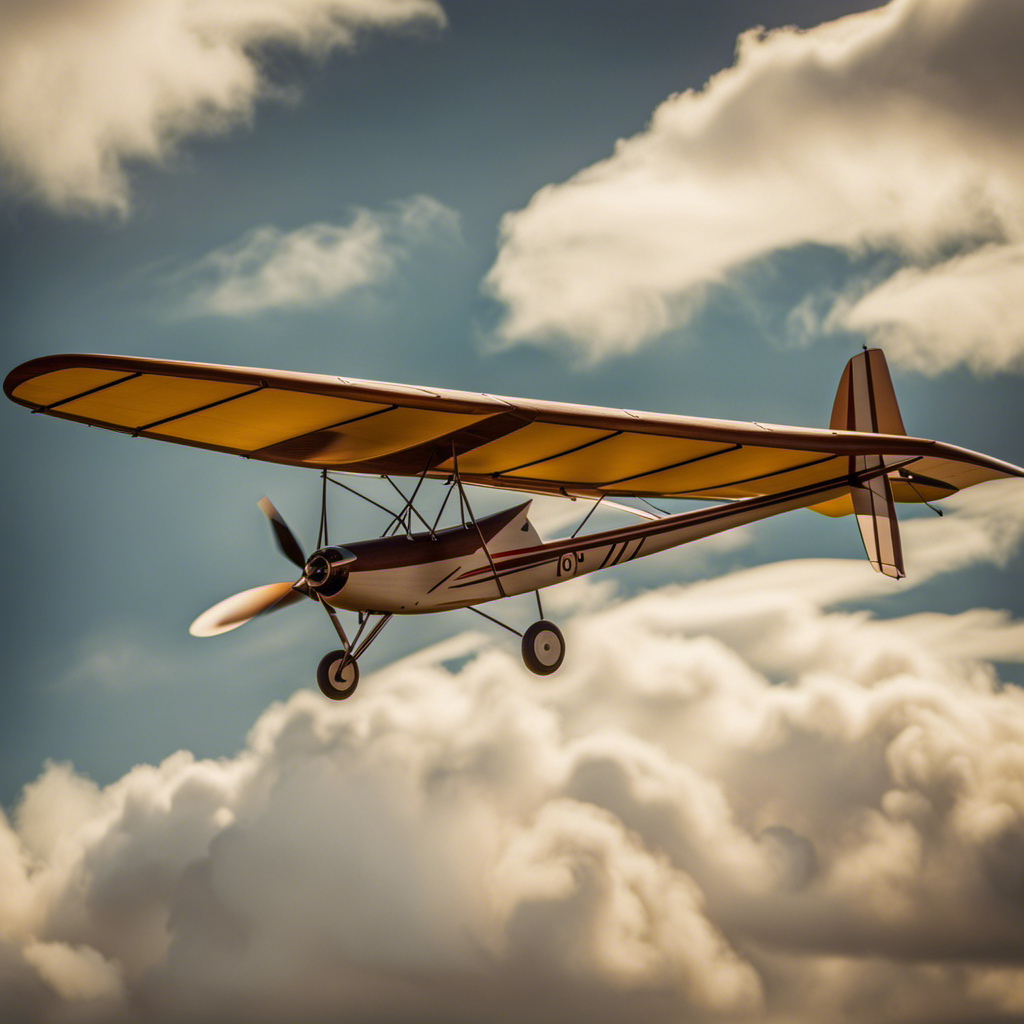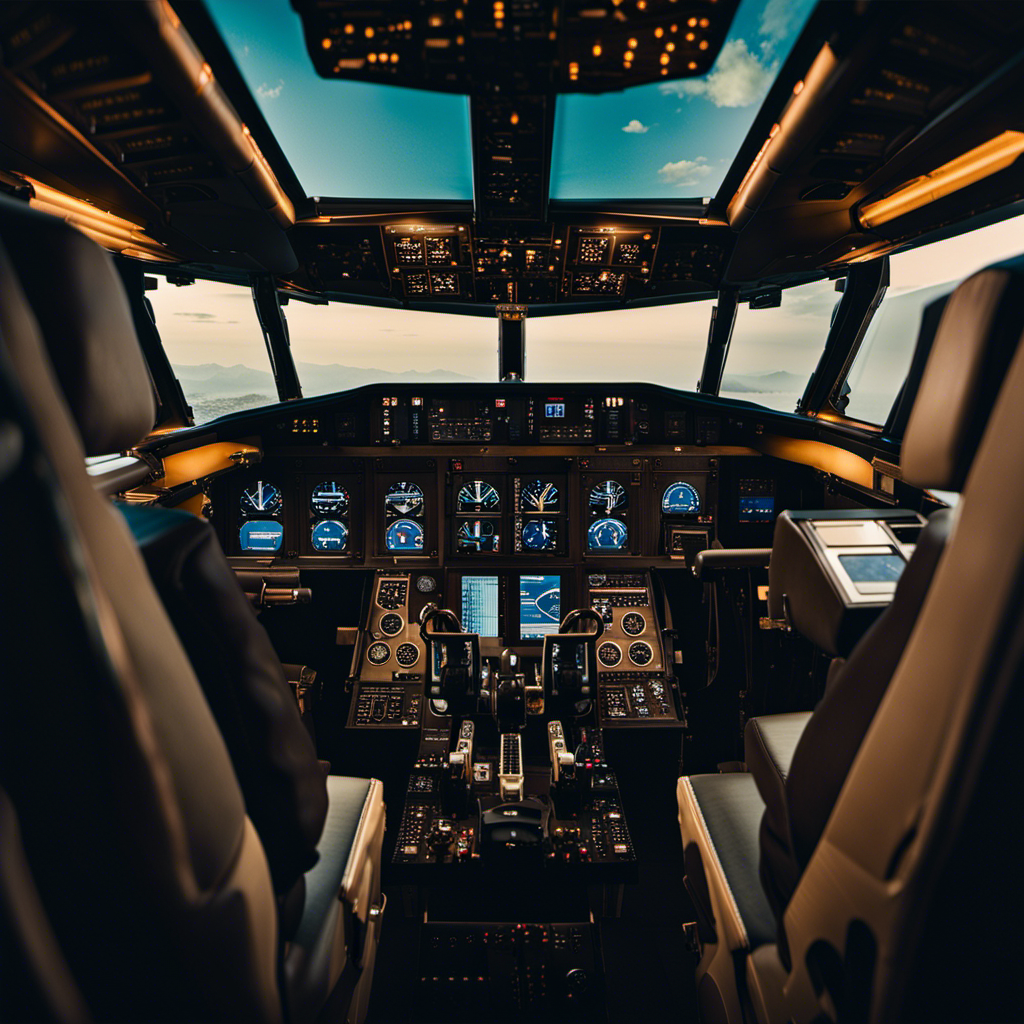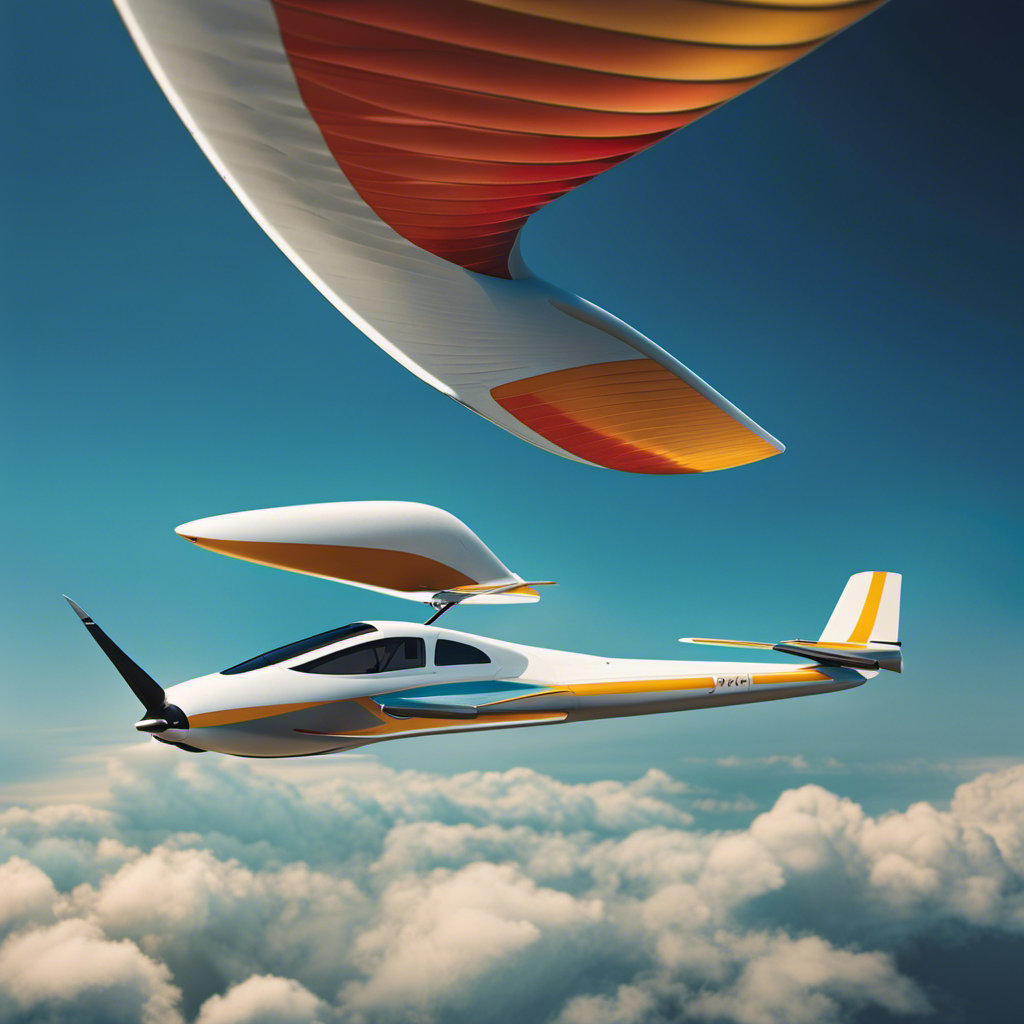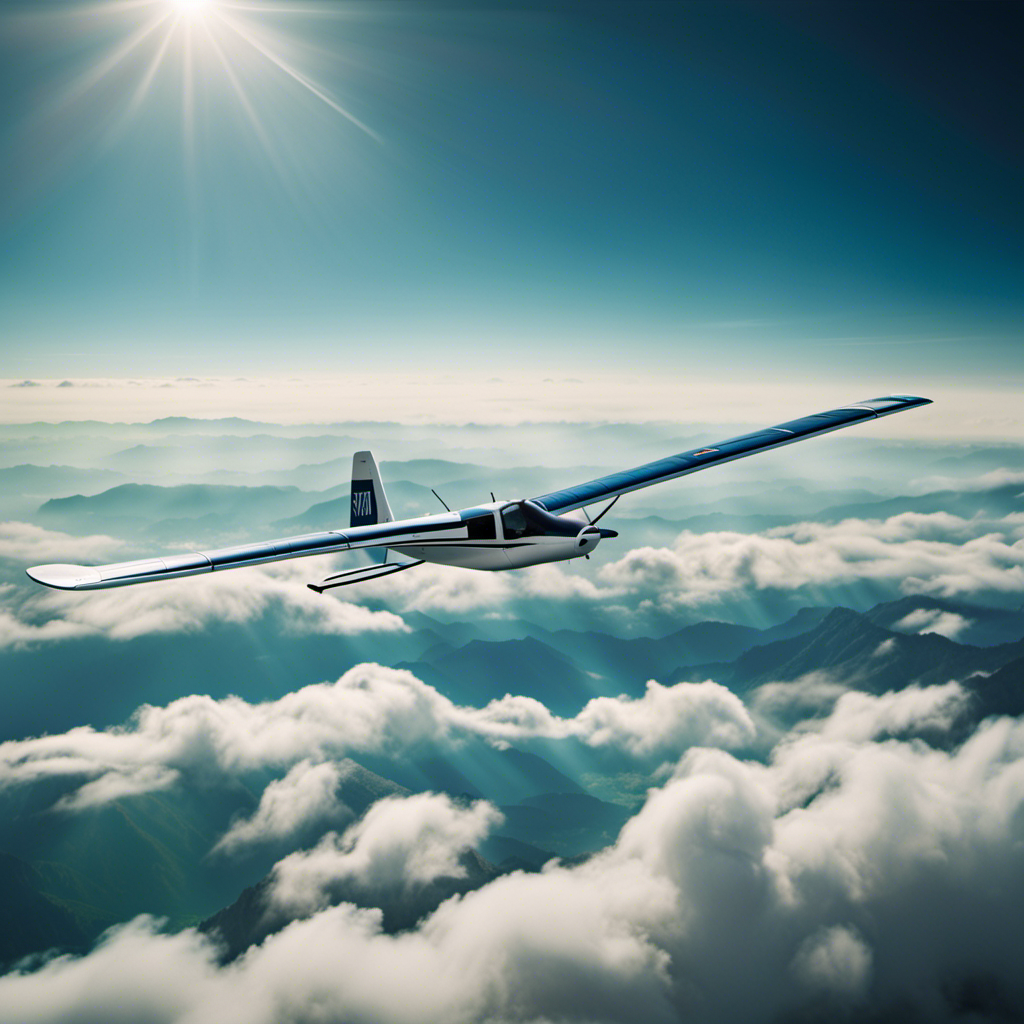As a lover of aviation, I have always been entranced by the idea of soaring through the air without an engine. What is it that allows gliders to soar?
In this article, we’ll delve into the principles of aerodynamics and the structure of gliders. We’ll explore the various launching methods and soaring techniques that allow these sleek aircraft to stay aloft for hours.
Join me as we unravel the secrets of glider piloting skills, compare gliders to powered aircraft, and discover notable achievements in this remarkable realm of flight.
Key Takeaways
- Gliders rely on lift, gravity, and drag for flight, unlike powered aircraft that use engines to generate thrust.
- Gliders excel in soaring conditions using thermal updrafts and ridge lift, allowing for extended flight and superior glide ratios.
- Pilots undergo specific training to exploit thermals and control gliders effectively, with a focus on energy management and optimizing airspeed.
- Advancements in glider technology, such as lightweight composite materials and electric propulsion systems, are shaping the future of gliding and introducing sustainable aviation options.
The Principles of Aerodynamics
The principles of aerodynamics explain how gliders stay in the air. In order to understand this, we must delve into the concept of aerodynamic forces.
When a glider is in flight, it experiences four main forces: lift, weight, drag, and thrust. Lift is the force that opposes gravity and keeps the glider airborne. It is generated by the shape of the glider’s wings and the angle at which they meet the oncoming airflow. By manipulating these factors, glider pilots can control the amount of lift generated and consequently, the altitude and duration of their flight. Understanding the principles of aerodynamics and lift generation is crucial in comprehending how gliders achieve flight.
Moving on to the subsequent section on the structure of gliders, we can explore the physical components that contribute to their ability to glide through the air effortlessly.
The Structure of Gliders
One way gliders stay airborne is by using their wing structure. Glider construction and wing design are crucial in achieving optimal performance.
Glider wings are typically long and slender, with a high aspect ratio, meaning they have a larger span compared to their chord length. This design reduces drag and increases lift, allowing the glider to stay aloft for extended periods.
The wings are also equipped with various control surfaces, such as ailerons and flaps, to manipulate the airflow and control the glider’s movement. Additionally, gliders often incorporate lightweight materials, such as carbon fiber, to maximize strength while minimizing weight. By carefully designing and constructing the wings, gliders are able to harness the power of aerodynamics and glide through the air with remarkable efficiency.
Transitioning to the subsequent section, launching methods for gliders involve different techniques to get them off the ground.
Launching Methods for Gliders
To launch a glider, you’ll need to master different techniques that involve propelling it into the air. Here are three common methods:
-
Bungee Launching: This method uses a bungee cord attached to the glider’s nose. The cord is stretched and then released, providing the initial upward force needed for takeoff. This technique is often used for hand-launched gliders.
-
Winch Launching: In this method, a powerful winch is used to rapidly reel in a cable attached to the glider. As the cable is reeled in, the glider gains speed and lift, allowing it to take off. This method is commonly used for launching larger gliders.
-
Aerotow Launching: In aerotow launching, a powered aircraft tows the glider into the air using a tow rope. Once the glider reaches the desired altitude, it releases the tow rope and continues its flight independently.
Mastering these launching techniques is essential for a successful glider flight. Once in the air, glider pilots rely on soaring techniques to maintain and gain altitude.
Transitioning to soaring techniques, pilots utilize various methods to stay aloft without an engine.
Soaring Techniques
Once you’ve reached the desired altitude, it’s time to employ soaring techniques to maintain and gain altitude without an engine. Soaring techniques are essential in glider competitions, where pilots aim to stay aloft for as long as possible and cover the greatest distance.
One of the primary techniques used is called thermaling. This involves circling within a rising column of warm air, known as a thermal, to gain altitude. Understanding wind patterns and utilizing ridge lift, where wind is forced upwards by a mountain or hill, is also crucial.
Pilots must constantly analyze the environment, looking for signs of rising air and adjusting their flight path accordingly. These soaring techniques require precision and knowledge of the local weather conditions.
Mastering these techniques is a critical part of developing glider piloting skills and ensuring success in glider competitions.
Glider Piloting Skills
When it comes to controlling and maneuvering a glider, there are several key techniques and skills that every pilot must master.
From understanding the different control surfaces and how they affect the glider’s movement, to practicing precise and coordinated control inputs, these skills are crucial for safe and efficient flying.
Additionally, a thorough understanding of weather conditions is essential for optimal flying. It allows pilots to anticipate and adapt to changing conditions such as thermals, wind patterns, and atmospheric stability.
How to Control and Maneuver a Glider
You can control and maneuver a glider by adjusting the control surfaces and shifting your body weight. Glider performance is dependent on how well you manipulate these controls to counteract the aerodynamic forces acting upon the aircraft.
By using the ailerons, you can roll the glider left or right. The elevator controls the pitch, allowing you to raise or lower the nose. To control the yaw, the rudder is used. Shifting your body weight inside the glider helps maintain balance and stability during turns and maneuvers.
Understanding how these controls work together is crucial for precise control and maneuverability.
Now, let’s discuss how understanding weather conditions for optimal flying is essential in glider piloting.
Understanding Weather Conditions for Optimal Flying
To optimize your flying experience, it’s important to understand the weather conditions. Weather plays a crucial role in glider flight as it affects the formation of thermals, which are columns of rising air that gliders use to gain altitude. By understanding meteorological factors such as wind patterns, temperature differentials, and cloud formations, you can anticipate the presence and strength of thermals. This knowledge allows you to plan your flight path accordingly, maximizing your time aloft and distance covered. Below is a table summarizing some of the key meteorological factors to consider when flying a glider:
| Meteorological Factors | Description |
|---|---|
| Wind | Determines the direction and strength of thermals. |
| Temperature | Influences the formation and strength of thermals. |
| Clouds | Indicate areas of rising air currents and potential thermals. |
| Pressure | Affects wind patterns and the overall stability of the atmosphere. |
Glider Safety Measures
It’s important to familiarize yourself with glider safety measures before taking flight. When flying a glider, it is crucial to be prepared for any emergency situation that may arise. Glider emergency procedures should be thoroughly understood and practiced before setting off. These procedures include actions to be taken in the event of a rope break, a stall, or an off-field landing.
Additionally, regular glider maintenance is essential for safe flying. Conducting pre-flight inspections, checking control surfaces, and ensuring proper functioning of instruments and systems are all part of glider maintenance tips. By following these procedures and tips, you can minimize the risks associated with glider flying and ensure a safe and enjoyable flight experience.
Moving on to the next section, let’s compare gliders to powered aircraft.
Gliders vs. Powered Aircraft
When comparing gliders to powered aircraft, there are significant differences in their propulsion systems. Gliders rely solely on the forces of lift, gravity, and drag to sustain their flight, while powered aircraft use engines to generate thrust. This fundamental distinction in propulsion affects various aspects of glider performance and flight training.
- Glider Performance:
- Gliders have limited speed and range due to their lack of engines.
- They excel in soaring conditions, leveraging thermal updrafts and ridge lift.
- Gliders have superior glide ratios, enabling them to stay aloft for extended periods.
Flight Training:
- Pilots undergo specific training to learn to exploit thermals and effectively control gliders.
- Understanding energy management and optimizing airspeed are crucial skills.
- Safety measures, such as proper pre-flight inspections and emergency procedures, are emphasized.
These differences in propulsion and training set gliders apart from powered aircraft. Notable glider achievements and records highlight the remarkable capabilities of these graceful aircraft.
Notable Glider Achievements and Records
Many pilots have achieved remarkable glider records, showcasing the impressive capabilities of these graceful aircraft. In notable glider competitions, pilots push the boundaries of distance, striving to break glider distance records. One such competition is the FAI World Glider Championships, where pilots from around the world compete for the title. The table below highlights some of the most notable glider distance records achieved in these competitions:
| Year | Pilot | Distance (km) |
|---|---|---|
| 2003 | Klaus Ohlmann | 2,463 |
| 2017 | Sebastian Kawa | 1,536 |
| 2019 | Mario Kiessling | 1,327 |
| 2020 | Louis Bouderlique | 1,238 |
These incredible achievements demonstrate the skill, knowledge, and dedication of glider pilots. They inspire others to strive for excellence in their own flying endeavors. As glider enthusiasts, we are constantly amazed by the accomplishments of these pilots. With such incredible records, it is no wonder that glider clubs and communities continue to flourish, providing a supportive and passionate environment for pilots to connect and share their love for gliding.
Glider Clubs and Communities
Joining a glider club can provide you with a supportive and passionate community of fellow pilots who share your love for gliding. Within these clubs, you can participate in glider competitions, where you can test your skills and compete against other pilots. These competitions often involve tasks such as flying long distances or achieving specific altitudes.
Being part of a glider club also means having access to a wealth of knowledge about glider maintenance. Fellow members can offer advice and guidance on how to keep your glider in optimal condition, ensuring its safety and performance. Glider clubs often organize workshops and training sessions to teach members about glider maintenance techniques, such as inspecting the wings, checking control surfaces, and maintaining the cockpit instruments.
This knowledge is invaluable for keeping your glider in top shape and ensuring a safe and enjoyable flying experience. As glider technology continues to advance, it’s exciting to imagine what the future holds for this exhilarating sport.
The Future of Glider Technology
As a glider pilot, I’m excited about the advancements in materials and design that are shaping the future of glider technology.
These advancements are revolutionizing the way gliders are built, making them lighter, stronger, and more efficient.
Additionally, the rise of electric and hybrid gliders is introducing a new era of sustainable and environmentally friendly aviation.
Advancements in Materials and Design
One of the most significant advancements in glider design is the use of lightweight composite materials. These materials have revolutionized the industry by providing gliders with increased strength and durability while reducing weight.
Here are some key benefits of using lightweight composite materials in glider design:
-
Enhanced performance: The lightweight nature of these materials allows gliders to achieve higher speeds and better maneuverability.
-
Increased fuel efficiency: With reduced weight, gliders require less energy to stay aloft, resulting in improved fuel efficiency.
-
Improved safety: Composite materials offer better resistance to corrosion and fatigue, making gliders more reliable and safer to operate.
-
Design flexibility: These materials can be molded into complex shapes, allowing designers to optimize aerodynamics and reduce drag.
-
Longer lifespan: The durability of composite materials means that gliders can have a longer operational life, reducing the need for frequent replacements.
These advancements in materials and design lay the groundwork for the next section, which explores the exciting world of electric and hybrid gliders.
Electric and Hybrid Gliders
The use of electric and hybrid technology has revolutionized the glider industry, providing more sustainable and efficient options for flight. Electric propulsion systems offer a cleaner and quieter alternative to traditional gliders, reducing emissions and noise pollution. These systems utilize electric motors powered by batteries, which can be recharged using renewable energy sources. The integration of electric propulsion also allows for improved aerodynamic efficiency, as the weight and drag associated with traditional engine systems are eliminated. This results in increased range and endurance for gliders, enabling longer flights and the ability to explore new territories. The table below highlights the key advantages of electric and hybrid gliders, showcasing their positive impact on the environment and performance.
| Advantages | Impact |
|---|---|
| Reduced emissions | Environmental sustainability and preservation |
| Quieter operation | Noise pollution reduction |
| Improved aerodynamic efficiency | Increased range, endurance, and exploration capabilities |
| Utilization of renewable energy | Decreased reliance on fossil fuels and promotion of clean energy sources |
Frequently Asked Questions
What is the average cost of purchasing a glider?
The average cost of purchasing a glider varies depending on the model and specifications. Additionally, maintenance costs should be factored in. It is important to consider these factors when budgeting for a glider.
Are there any weight restrictions for glider pilots?
Yes, there are weight restrictions for glider pilots. The pilot’s weight, combined with the weight of the glider and other factors, must not exceed the maximum weight limit specified by the aircraft’s manufacturer.
Can gliders fly at night?
Night flying in gliders is possible with proper training and equipment. Glider navigation relies heavily on instruments and pilots must have a thorough understanding of airspace rules. It’s an exhilarating experience, but safety is of utmost importance.
Are there any specific weather conditions that gliders cannot fly in?
Gliders cannot fly in certain specific weather conditions. High winds, thunderstorms, and icing are examples. These conditions can be dangerous and affect the stability and control of the glider, making it unsafe to fly.
How long does it take to become a certified glider pilot?
It takes approximately 40-60 hours of flight training to become a certified glider pilot. The cost of training can vary depending on the flight school and location. Requirements for certification include passing written and practical exams.
Conclusion
In conclusion, gliders are remarkable aircraft that rely on the principles of aerodynamics to soar through the sky. Their sleek structure and lightweight design allow them to harness the power of the wind and stay aloft for extended periods.
The skillful piloting techniques and soaring methods employed by glider pilots enable them to navigate and stay airborne for hours. Gliders, like graceful birds, effortlessly ride the air currents, providing a unique and exhilarating experience for pilots and enthusiasts alike.
The future of glider technology holds exciting possibilities for even more efficient and advanced aircraft, ensuring the continued growth and enjoyment of this captivating sport.
With a heart that soars as high as the skies, Aria, affectionately known as “Skylark,” is the driving force behind Soaring Skyways. Her journey into the gliding world began as a young dreamer gazing up at the soaring birds, yearning to experience the weightlessness and freedom they embodied. With years of experience both in the cockpit and behind the scenes, Aria’s commitment to the gliding community is unwavering.
